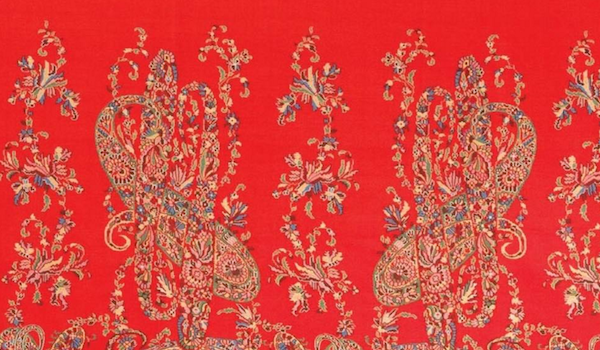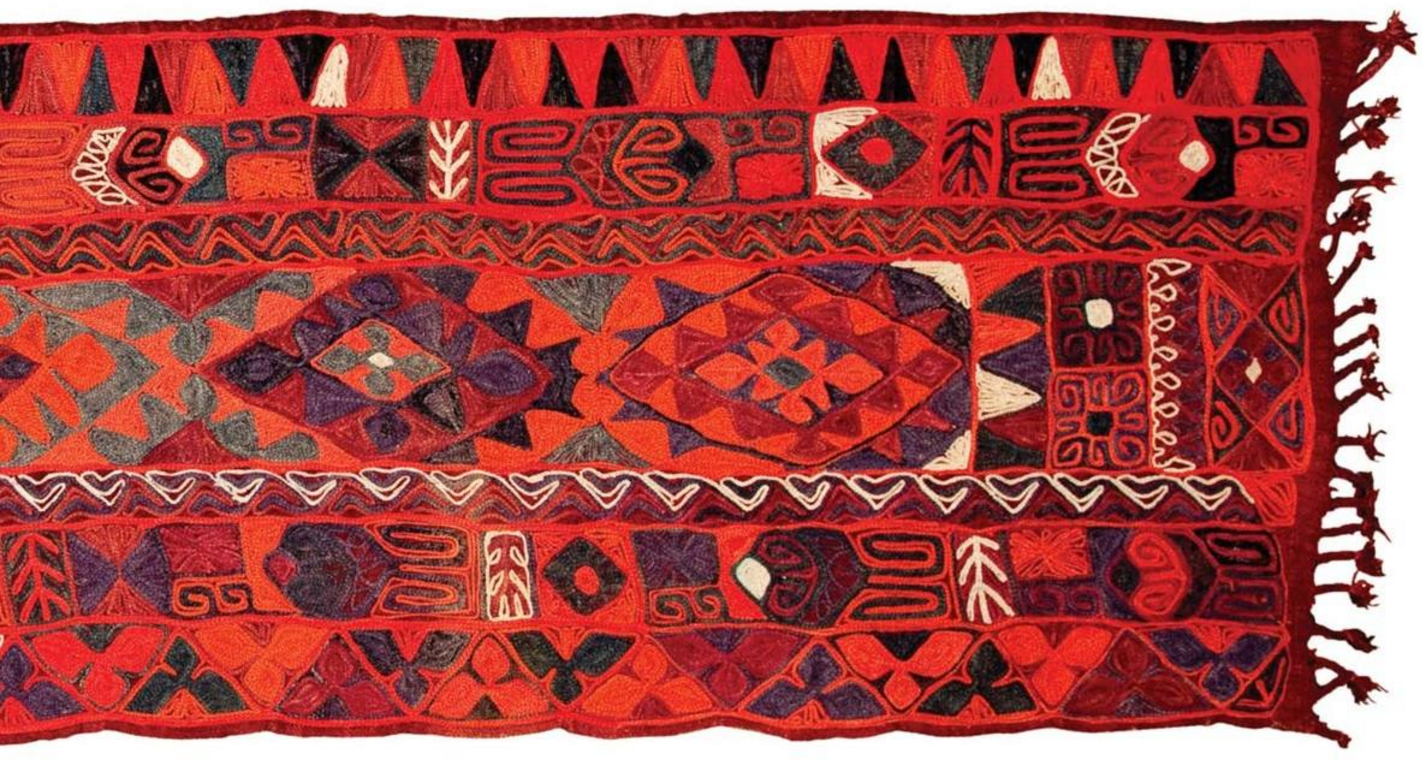Exploring Iran
Guest Blog post. Nickie Shobeiry is a writer and journalist living in England.
Throughout history, Iran has had a rich relationship with textiles, its goods being sold by merchants to the rest of the world. Intricate patterns were used for clothing and for home furnishing, and the materials soon came to hold their own on a global scale. By the 17th century, silk materials were distributed, and these luxury items often had plants and animals woven into them, or calligraphy, showing words from beloved poets. The geometric patterns associated with Islamic art were also used, the repeated shapes representing eternity.
 An example of this is the ‘boteh’, or ‘paisley’, as it is known in English. This delicate design depicts flora, and was made popular in Europe after its introduction to the continent in the 17th century. Far from centuries-old merchant ships, the paisley design swung back into popularity in the 20th century thanks to the psychedelic, swirly nature of the 60’s. The design can be seen on kaftans such as those handmade in the Iranian province of Isfahan using gold threading.
An example of this is the ‘boteh’, or ‘paisley’, as it is known in English. This delicate design depicts flora, and was made popular in Europe after its introduction to the continent in the 17th century. Far from centuries-old merchant ships, the paisley design swung back into popularity in the 20th century thanks to the psychedelic, swirly nature of the 60’s. The design can be seen on kaftans such as those handmade in the Iranian province of Isfahan using gold threading.
 Isfahan is heralded for its artistry. Here, vases are made using the ‘meenakari’ process. Often, just one artisan acts as designer, goldsmith, engraver, enamellist, polisher and stone-setter, creating these vibrant pieces. Exploring the origins of design is a way of peering into, and appreciating, another culture. The growing popularity of artists like Naghmeh Kiumarsi shows the borderless movement of ideas, lifting the veil on centuries of Iranian art and history.
Isfahan is heralded for its artistry. Here, vases are made using the ‘meenakari’ process. Often, just one artisan acts as designer, goldsmith, engraver, enamellist, polisher and stone-setter, creating these vibrant pieces. Exploring the origins of design is a way of peering into, and appreciating, another culture. The growing popularity of artists like Naghmeh Kiumarsi shows the borderless movement of ideas, lifting the veil on centuries of Iranian art and history.
 An example of this is the ‘boteh’, or ‘paisley’, as it is known in English. This delicate design depicts flora, and was made popular in Europe after its introduction to the continent in the 17th century. Far from centuries-old merchant ships, the paisley design swung back into popularity in the 20th century thanks to the psychedelic, swirly nature of the 60’s. The design can be seen on kaftans such as those handmade in the Iranian province of Isfahan using gold threading.
An example of this is the ‘boteh’, or ‘paisley’, as it is known in English. This delicate design depicts flora, and was made popular in Europe after its introduction to the continent in the 17th century. Far from centuries-old merchant ships, the paisley design swung back into popularity in the 20th century thanks to the psychedelic, swirly nature of the 60’s. The design can be seen on kaftans such as those handmade in the Iranian province of Isfahan using gold threading.
 Isfahan is heralded for its artistry. Here, vases are made using the ‘meenakari’ process. Often, just one artisan acts as designer, goldsmith, engraver, enamellist, polisher and stone-setter, creating these vibrant pieces. Exploring the origins of design is a way of peering into, and appreciating, another culture. The growing popularity of artists like Naghmeh Kiumarsi shows the borderless movement of ideas, lifting the veil on centuries of Iranian art and history.
Isfahan is heralded for its artistry. Here, vases are made using the ‘meenakari’ process. Often, just one artisan acts as designer, goldsmith, engraver, enamellist, polisher and stone-setter, creating these vibrant pieces. Exploring the origins of design is a way of peering into, and appreciating, another culture. The growing popularity of artists like Naghmeh Kiumarsi shows the borderless movement of ideas, lifting the veil on centuries of Iranian art and history.
